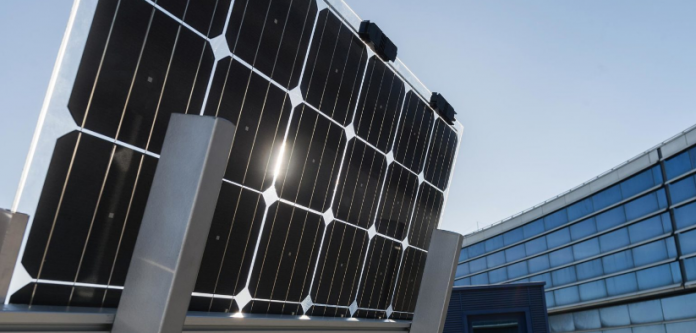Europe has a clear strategic interest in supporting the redevelopment of solar PV manufacturing on the continent – it goes hand in hand with the further expansion of renewables in Europe.
The 2021 semiconductor crisis, and the consequences of undue pressure on the supply chains of our automotive and inverter industries, have taught us one thing: an industry can only develop sustainably with a clear strategic vision for its value chain. The European solar PV market is on an exponential growth curve, set to establish solar as the key energy producer in the next decade. Maintaining that growth will require redeveloping sizeable European manufacturing capacity for innovative technologies, and diversifying supply chains for our developers.
SolarPower Europe envisions 20 GW of production in Europe by 2025 along the solar PV value chain, from polysilicon to modules, moving in coordination with the component and equipment industry, and adapting to the needs of our project developers. This is the objective we set for the European Solar Initiative, an industrial alliance we launched in February this year, which facilitates the redevelopment of industrial projects in Europe. Currently in the EU, each of the ingot/wafer and cell segments have capacities of 1 GW or less. There are several sub-GW module manufacturers with a combined capacity of around 6-7 GW, but just one silicon and a few inverter manufacturers can produce GW-level output. Against these conditions, we have set an ambitious target, but the reality remains: it is only with GW-scale fabs that Europe can reach global cost competitiveness.
Reasons for optimism
2021 has seen challenges for the solar PV industry, but despite this, several solar cell and module manufacturers have made significant steps forward. Meyer Burger opened two production sites in Eastern Germany with an annual 0.4 GW production capacity of solar cells and modules and secured financing to already achieve 1.4 GW and 1 GW production next year, for cells and modules respectively. Meanwhile, Oxford PV also secured financing to take its Brandenburg site to full production in 2022. NexWafe has received a strategic investment from global solar investor, Reliance, allowing it to start production in Germany in 2022, with plans to scale up to 3 GW as early as 2025.

Oxford PV, which in December 2020 hit a new world record cell efficiency of 29.52%, hopes to begin commercial production in early 2022.
Image: Oxford PV
It is particularly interesting to see an investment wave flooding the earlier stages of the value chain, showing the initial signs of market coordinated movement across the industry. Norwegian Crystal has announced plans to redevelop 10 GW of ingot production in Europe, while NorSun has doubled its ingot and wafer production capacity to 1 GW in 2021. We are also seeing that the solar glass and encapsulant industries are mobilizing to ensure that the solar reindustrialization of Europe is a full value chain effort.
Recognition and reward
With significant industrial developments across the value chain, it is no surprise that policymakers are increasingly acknowledging the potential of European solar manufacturing. The European Commission’s revised Industrial Strategy, published in May, identifies solar PV as one of the 14 key industrial ecosystems for the EU and recognizes the significant role of the European Solar Initiative. In the latter half of 2021, the publication of the Commission’s report on “Progress on competitiveness of clean energy technologies” notes that the industry is “growing with unexpected speed”, and recognizes the EU’s global leadership in various parts of the value chain, including R&D, polysilicon production, and equipment for PV manufacturing.
Recognition at the policy level has translated into strong financial advantages for European manufacturing, with several key announcements in 2021. In Italy, Enel Green Power is one of the first seven large-scale projects to be awarded under the EU’s first Innovation Fund. The award will fund a 3 GW scale-up of Enel’s bifacial heterojunction factory in Catania. A perfect showcase of the research and development value-add in Europe, the innovative technology offers higher performance with respect to conventional PV modules.
Next steps
Without financing support to de-risk reinvestment into strategic manufacturing capacities, the industry will struggle to maximize its potential and deliver the continent’s climate goals. The recent renewal of the InvestEU program is the perfect opportunity to make the European Investment Bank the industrial investment arm of the EU Industrial Strategy.
Beyond financing, we also need to ensure a level-playing field for our manufacturers, compared to their global competitors. Manufacturers need access to globally competitive business environments, such as cost-competitive electricity or facilitated access to land. The sustainability of solar products must be better valued, without threatening the competitiveness of solar products and maintaining a healthy price competition.
With these conditions in place and with a united European industry, we can bring EU solar manufacturing to the next level. Looking into next year, the opportunity continues with the Commission’s landmark announcement of an EU Solar Strategy. Expected in Q2 2022, SolarPower Europe will work with our members and stakeholders to ensure this next communication will support the massive potential of the European solar manufacturing industry across the value chain.






